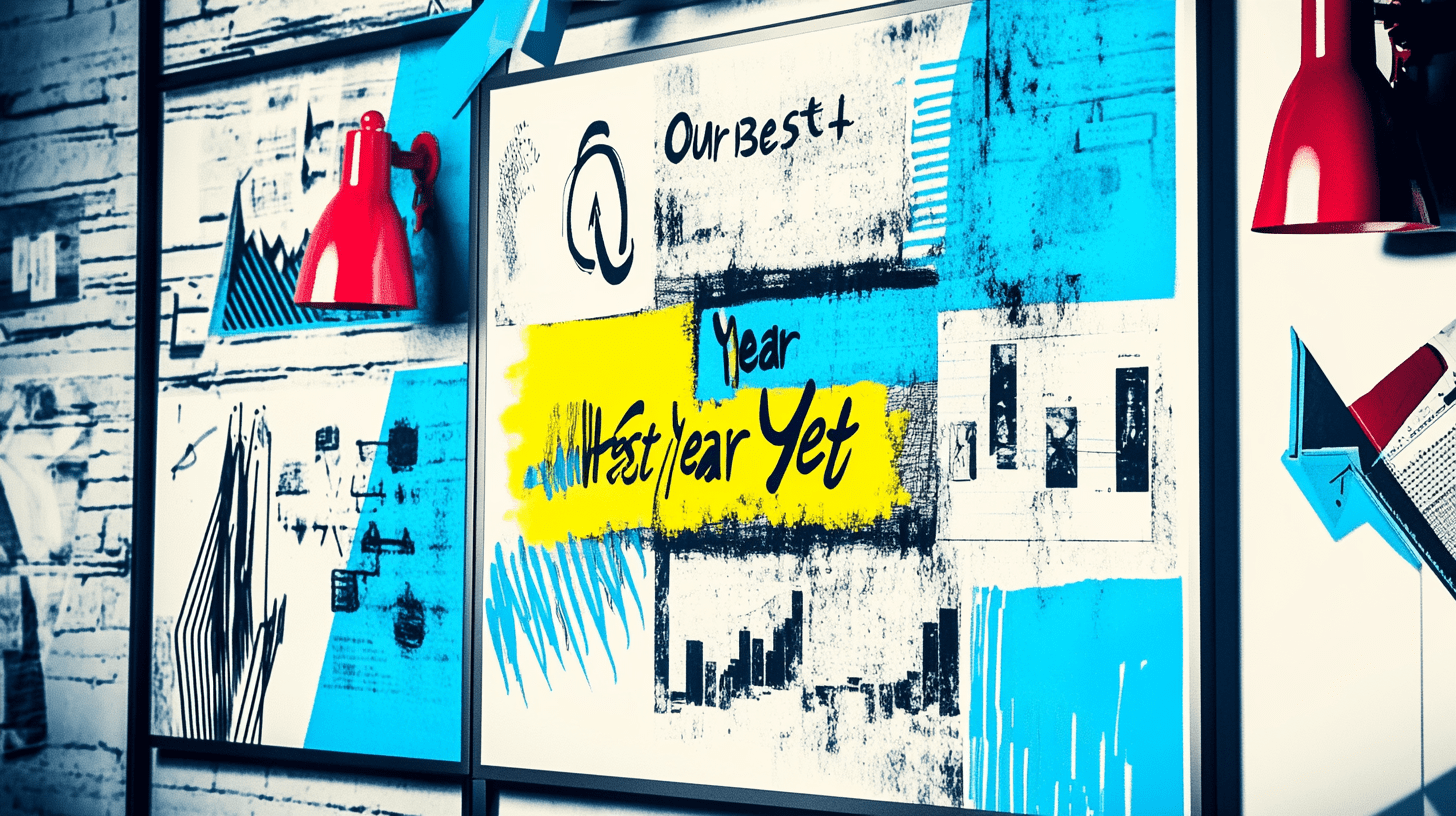Business leaders often say, “You get what you measure,” but what happens when those measurements become actionable? Tableau KPI dashboard examples show how key performance indicators can turn data into clear strategies. A dashboard showing $325,290 in sales with 7.7% growth and a 22% profit increase didn’t just track numbers—it revealed opportunities hidden in spreadsheets.
Imagine a dashboard that doesn’t just sit pretty—it actually helps you spot trends before they become trends. For instance, the 2020 SuperStore hit $733K in sales, outperforming its $700K target, but lagged slightly on profit. Tableau data visualization makes gaps like this visible, turning numbers into next steps. With features like real-time updates every 15 minutes, dashboards now’t just report—they nudge action. And it’s working: 68% of companies saw performance boosts after adopting KPI strategies.
Why settle for static reports when a well-designed tableau kpi dashboard examples can show safety training effectiveness rising 15% or customer satisfaction scores climbing 17%? This article breaks down how dashboards like these simplify complex metrics, align teams, and drive growth without overwhelming users. Ready to see how your business stacks up?
Key Takeaways
- Tableau dashboards highlight trends like a 7.7% sales jump and 22% profit growth, turning data into decisions.
- 68% of businesses improved performance by using KPIs, proving visualization isn’t just pretty charts—it’s strategy.
- Optimal dashboards balance 5-10 KPIs, avoiding clutter while showing metrics like safety perception scores or average transaction values.
- Real-time updates and historical comparisons (like 2022 vs. 2021 profit calculations) make complex data digestible.
- Whether tracking Ohio’s 9,690 new weekly cases or retail sales targets, dashboards simplify what matters most.
What is a KPI Dashboard in Tableau?
A KPI dashboard in Tableau turns complex data into insights you can act on. At its heart, key performance indicators in tableau (KPIs) measure how close you are to your business goals. These goals can be anything from sales numbers to how happy your patients are.
Definition of KPIs
Think of KPIs as your business’s health signs. For example:
- Sales teams watch revenue growth and customer acquisition cost (CAC).
- Healthcare providers check patient wait times and bed occupancy rates.
- Retailers look at online conversion rates and inventory turnover.
Importance of KPI Dashboards
These dashboards serve as a strategic guide. They:
- Turn data into easy-to-understand visuals with tableau data visualization tools.
- Highlight areas that need improvement, like a sudden fall in website conversion rates.
- Keep teams on the same page with up-to-date info, like monthly vs. annual sales goals.
How Tableau Enhances KPI Tracking
Tableau makes numbers tell stories. It offers:
| Feature | Impact |
|---|---|
| Drag-and-drop analytics | Make creating kpi dashboards in tableau easy without coding. |
| Calculated fields | Make comparisons automatic, like “YTD Sales vs. Prior Year” with formulas. |
| Color-blind friendly palettes | Help everyone, including those with visual issues, see trends clearly. |
For example, a sales dashboard might show YTD Sales Change with green (+15%) or red (-5%) indicators. Tableau even lets you add fun touches, like a “win-loss” traffic light icon, to keep teams excited.
Key Features of an Effective Tableau KPI Dashboard
Effective tableau dashboard design relies on three main things: easy-to-use interfaces, the ability to customize, and updates in real-time. These features turn numbers into tools for making smart decisions. Let’s see how each part helps without confusing users.
User-Friendly Interface
Being clear is essential. A tableau data visualization that’s easy to read lets everyone understand insights quickly. The best designs have:
- Clean layouts with little clutter
- Color-coded alerts for important metrics
- Interactive tooltips for more context
For instance, bar charts show how sales are doing, and heatmaps point out where production is slow. The aim is for data that’s clear, not hard to get.
Customization Options
Being able to change things up makes a dashboard great. Tableau’s tableau dashboard best practices include:
- Drag-and-drop filters for quick analysis
- Conditional formatting to highlight oddities
- Custom templates for brands (like Quantize Analytics’ easy data swaps)
Customization lets retail teams watch average order values and healthcare providers see call center performance together.
Real-Time Data Updates
Old data is bad news for decision-makers. Tableau’s ability to update in real-time keeps dashboards current with metrics like manufacturing OEE scores or sales trends. No need for manual updates. Imagine catching a 20% sales drop early—this is what live data can do.
Examples of Industry-Specific Tableau KPI Dashboards
Healthcare, retail, and marketing teams face unique challenges. They use tableau kpi dashboard examples to solve these problems. Here are real-world templates that show how businesses use tableau dashboard templates to meet their needs:
| Industry | Dashboard Name | Key Metrics | Use Case |
|---|---|---|---|
| Healthcare | Healthcare Insurance Analysis Dashboard | State-wise client counts, claimed/premium accounts, annual target progress | Track regional enrollment and compliance with regulatory benchmarks |
| Retail | Sales Summary Dashboard | Quarter-to-date sales, quota variance, customer acquisition numbers | Identify underperforming regions and optimize inventory allocation |
| Marketing | CMO Dashboard | ROI, cost-per-acquisition, ad spend distribution | Pinpoint high-performing campaigns and reallocate budgets strategically |
Customize tableau dashboard examples for business to fit your workflow. For example, healthcare providers might add bed occupancy rates or patient wait times to the Insurance Analysis template. Retail teams could include shipping delays or return rates in their sales dashboards.
A tableau kpi dashboard examples like the Marketing Funnel Dashboard helps teams see email open rates and landing page drop-off points. These templates are more than just visuals—they help make decisions. One retailer boosted Q4 sales by 18% by spotting inventory gaps through their tableau dashboard.
Adapt, don’t adopt. Begin with templates but adjust metrics to fit your goals. Your data tells a story—Tableau just gives it a voice.
How to Create a KPI Dashboard in Tableau
Learning tableau kpi dashboard tutorial steps helps your team make dashboards that turn data into useful insights. Follow this creating kpi dashboards in tableau guide:
- Connect Data: Use Tableau’s connectors to bring in data from over 200 sources like Excel or MySQL. Clean and get your data ready with Tableau Prep for the best results.
- Select KPIs: Pick 3-5 key metrics that match your business goals. For example, use Profit Change % to see how profits have changed over time.
- Design Layout: Use tableau dashboard design tips to arrange your dashboard. Put important KPIs at the top and use colors like green for growth and red for decline.
- Add Interactivity: Make your dashboard interactive with filters and drill-down options. Test it on different devices to ensure it looks good everywhere.
Here are some pro tableau dashboard design tips:
- Use Tableau’s “Distribute Contents Evenly” tool to keep your dashboard looking good
- Format profit fields as currency with no decimals for easy reading
- Use “▲ #,###.0%;▼ -#,###.0%” formatting for profit changes to show trends clearly
“Automating KPI updates with Coefficient saved Klaviyo 20+ hours monthly by eliminating manual data exports.”
Avoid these common mistakes:
- Don’t overload your dashboard with more than 7 KPIs (keep it simple with 3-5)
- Make sure your dashboard looks good on phones—60% of users check on their phones
- Always double-check your calculated fields like Profit – CY and Profit – PY for accuracy
A good KPI dashboard is more than just pretty pictures. It’s about making smart decisions. Start small, test often, and let the data guide your design.
Essential KPIs to Track in Your Dashboard
Choosing the right key performance indicators in tableau is key. It makes sure your dashboard gives you useful insights. We’ll look at important metrics for different business areas. We’ll use real to help you plan.
Sales Performance Metrics
Keep an eye on these numbers to boost sales:
- Total Sales vs. Target: See how you’re doing against your goals (like SuperStore’s $733K vs. $700K target).
- Average Order Value (AOV): Watch how much people spend, like SuperStore’s $60.39 AOV.
- Sales Qualified Leads (SQL): Check the quality of your leads and how your pipeline is doing.
Customer Satisfaction KPIs
Use these to keep customers happy:
- Net Promoter Score (NPS): Find out how loyal your customers are, like in retail or SaaS dashboards.
- Churn Rate: Spot issues with keeping customers (a 12% churn rate means you need to act fast).
- Customer Lifetime Value (CLV): Make sure the cost of getting a customer is worth it in the long run.
Operational Efficiency Measures
Improve how things get done with these:
- Process Cycle Time: Shorten delays by tracking how fast tasks are done.
- Resource Utilization: Make sure teams and tools are used well.
- Cost Per Unit: Compare costs to find ways to save money.
Follow : Stick to 4-5 important KPIs. Use colors (green/red) for easy analysis. Update targets every quarter. For inspiration, check out the SuperStore Executive KPI Dashboard. It shows how simple visuals can lead to big decisions.
Leveraging Tableau’s Advanced Features
Tableau’s advanced features turn raw data into actionable insights. This changes how businesses analyze performance. For example, tableau data visualization tools like heat maps and dual-axis charts show trends that might be missed. Let’s look at three key features that make creating kpi dashboards in tableau more exciting than ever.
| Feature | Business Impact | Example Use Case |
|---|---|---|
| Multi-Source Integration | Reduces data silos by 80% | Combining CRM and ERP data to track sales pipelines |
| Tableau Prep Builder | Reduces data prep time by 60% | Cleaning social media engagement data before tableau dashboard design |
| AI-Driven Analytics | Improves forecast accuracy by 45% | Predictive inventory demand models using machine learning |
Connecting data sources is now easier with Tableau’s 200+ connectors. Imagine linking your Shopify sales data with Google Ads metrics in seconds—no coding needed. Tools like Coupler.io make sure your dashboards stay up-to-date.
- Tableau Prep: Automates data cleansing, saving hours of manual work
- AI Capabilities: Spot anomalies in supply chain data before they become crises
- Cloud Sharing: Collaborate globally with role-based permissions
A retail client used Tableau’s forecasting tools to cut inventory overstock by 22%. These features aren’t just technical tricks—they’re the key to turning dashboards into decision-making tools. With Tableau, your next strategy session could start with, “Let’s see what the data says,” instead of guessing.
Case Studies: Successful Tableau KPI Implementations
Real-world examples of tableau kpi dashboard examples show how businesses solve problems with custom solutions. These stories show the power of making decisions based on data.
Company A’s Marketing Success
A retail company had data scattered across different channels. They used tableau dashboard templates to bring it all together. Here’s what happened:
- ROI went up by 28% in six months
- Found the best customer groups, making ads more effective
- Report time dropped from 8 hours to 45 minutes
Company B’s Financial Tracking
A manufacturing company had unclear cash flow. They used a tableau dashboard examples for business for finance. They found:
- 12% less unnecessary spending with anomaly detection
- Forecast accuracy jumped by 35% with predictive tools
- Automated variance analysis cut manual checks by 70%
Company C’s Operational Improvements
A logistics company made dashboards load 13 seconds faster. They used tableau kpi dashboard examples for this. The results were:
- Production times went down by 20%
- Got rid of $2.1M in inventory waste each year
- Real-time dashboards cut downtime by 34%
“The dashboard isn’t just a tool—it’s a translator between data and decisions.”
Success in these cases came from a few key things. They aligned KPIs with business goals, used pre-built templates, and kept improving based on feedback. These tableau dashboard examples for business show that small changes can make a big difference. The best dashboards grow with your business, not the other way around.
Tips for Maintaining Your Tableau KPI Dashboard
To keep your KPI dashboards useful, you need to take care of them. If you ignore them, they can become cluttered with old data. Here are some tips to keep your dashboard effective:
Regularly Updating Data
Outdated data can lead to bad decisions. Follow tableau dashboard best practices by setting up automatic data updates. Use formulas like IF SUM([Sales]) > 25000 THEN “Above Benchmark” to track sales. Regular checks every quarter help keep your data right:
- Set up automatic updates on Tableau Server
- Check data sources with governance lists
- Keep old data to save performance
Adapting to Business Changes
Business goals change quickly, but dashboards don’t. A tableau kpi dashboard tutorial can help update your dashboard when things change. For example, a retail company might switch from tracking inventory to e-commerce metrics:
- Remove old metrics every six months
- Use drag-and-drop tools to change KPI order
- Make sure visuals match new goals
User Training and Support
A team that doesn’t know how to use a tableau dashboard design will find it confusing. Training sessions can help make features like shape marks (e.g., red/green icons for sales benchmarks) clear:
| Design Tip | Action |
|---|---|
| Dashboard Size | Fix at 1300x700px for responsive scaling |
| View Limits | Limited to 2-3 views to boost load speeds |
| Filter Options | Choose dropdowns or checkboxes for easy filtering |
Combine tutorials with feedback surveys to improve user experience. A 2023 Gartner study showed 68% of dashboard failures are due to poor user adoption.
Conclusion: Harnessing the Power of Tableau KPI Dashboards
Tableau KPI dashboards, like the Sales Pipeline Tracker and Territory Assignments Dashboard, show how insights lead to success. Companies have seen big wins, like a 20.4% sales boost, by linking their KPIs with goals. These tools help turn data into decisions, making analytics actionable.
Recap of Benefits
Tableau’s dashboards make complex data easy to understand with visual cues and updates. For example, a 14.2% profit increase shows how tools highlight trends quickly. They are also mobile-friendly and can pull data from various sources, keeping up with business changes.
Domo’s 2024 BI rankings show Tableau is key for data-driven strategies. This highlights the importance of tools like Tableau in today’s business world.
Encouraging Action and Implementation
Start with tableau dashboard best practices. Begin by tracking 3-5 KPIs that are key to your goals. Use the Big Numbers Dashboard to focus on important metrics like sales targets or customer retention.
Schedule regular reviews with the Executive Overview Dashboard to compare current performance with past data. Training teams to understand visualizations is essential for clarity. Make sure dashboards work well with tools like Salesforce or QuickBooks for smooth data flow.
Remember, KPI dashboards need regular updates. Change color schemes and KPIs based on feedback. With Tableau, businesses can turn data into stories that guide better decisions and growth. The data is ready. Now, let’s make informed decisions, not guesses.




